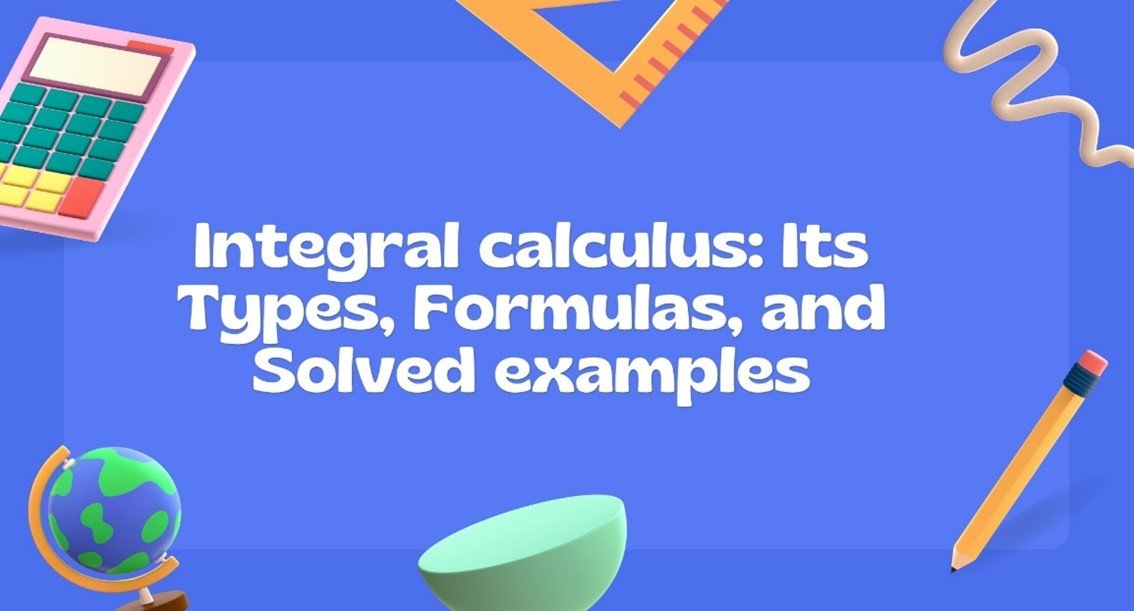Integral calculus is a fundamental branch of mathematics that deals with integrals and their applications. This mathematical discipline has a rich history, with the term "integration" first introduced by renowned figures like Isaac Newton and Leibniz in the 17th century. In this article, we'll delve into the core concepts of integration, its various types, essential formulas, and comprehensive methods for solving integrals.
What is Integration?
Integration is primarily employed to calculate the area beneath a curve. It involves finding the anti-derivative of a function, represented as ∫. If f is a differentiable function and f' is its derivative, integrating f' returns the original function, f.
For example: Let f(x) = x^3 + 4x^2 + 3x. If we differentiate f(x) with respect to x, denoted as f'(x), we get 3x^2 + 8x + 3. Now, if we integrate f'(x) with respect to x, we obtain:
∫f(x) dx = x^3 + 4x^2 + 3x
Formulas of Integration
Before delving into specific examples, it's crucial to be familiar with some basic integral formulas. These foundational formulas are essential for solving integrals efficiently.
Types of Integrals
There are two primary types of integrals: Definite and Indefinite Integrals.
Indefinite Integral
The indefinite integral has no bounded limits. It is represented as ∫f(x) dx = F(x) + C, where f(x) is the integrand, dx is the integrating agent, and C is an arbitrary constant.
Definite Integral
In contrast, the definite integral has bounded limits, with both lower and upper bounds defined as [a, b]. If a is the lower limit and b is the upper limit, we express it as ∫[a, b] f(x) dx. When a > b, the definite integral is calculated as ∫[a, b] f(x) dx = f(a) - f(b). However, when a = b, it simplifies to ∫[a, a] f(x) dx = 0, and no arbitrary constant is involved in definite integrals.
Utilizing an integral calculator can be invaluable for accurately evaluating both definite and indefinite integrals, following the rules and formulas of integration.
Examples of Integration
In this section, we'll walk through practical examples of calculating definite and indefinite integrals to provide a clear understanding of the process.
Example 1: Integrating a Polynomial Function
Consider the function f(x) = x^3 + 4x^2 + 5x + 9. Let's find its integral step by step:
Step 1: Apply the integral operator to both sides. ∫f(x) dx = (x^3 + 4x^2 + 5x + 9) dx
Step 2: Separate the integrals using the appropriate rule. ∫f(x) dx = ∫(x^3) dx + ∫(4x^2) dx + ∫(5x) dx + ∫9 dx
Step 3: Move constants outside the integral. ∫f(x) dx = ∫(x^3) dx + 4∫(x^2) dx + 5∫(x) dx + ∫9 dx
Step 4: Integrate each term using the power rule and constant rule. ∫f(x) dx = (x^(3+1))/(3+1) + 4(x^(2+1))/(2+1) + 5(x^(1+1))/(1+1) + 9x + C ∫f(x) dx = (x^4/4) + (4x^3/3) + (5x^2/2) + 9x + C
Step 5: Simplify the expression. ∫f(x) dx = (x^4/4) + (4x^3/3) + (5x^2/2) + 9x + C
So, ∫(x^3 + 4x^2 + 5x + 9) dx = (x^4/4) + (4x^3/3) + (5x^2/2) + 9x + C
Example 2: Integrating a Trigonometric Function
Consider the function f(x) = cos(5x). Here's how we integrate it:
Step 1: Apply the integral operator to both sides concerning x. ∫ f(x) dx = ∫ (cos(5x)) dx
Step 2: Utilize the integral of cos(x) and adjust for the angle. ∫ f(x) dx = [sin(5x)/5] + C
Example 3: Evaluating a Definite Integral
Now, let's evaluate the integral of the function f(x) = x^2 + 4x + 5 within the region [1, 2]:
Step 1: Apply the integral operator to both sides with the specified limits. ∫[1,2] f(x) dx = ∫[1,2] (x^2 + 4x + 5) dx
Step 2: Separate the integrals. ∫[1,2] f(x) dx = ∫[1,2] (x^2) dx + ∫[1,2] 4x dx + ∫[1,2] 5 dx
Step 3: Move constants outside the integral. ∫[1,2] f(x) dx = ∫[1,2] (x^2) dx + 4∫[1,2] x dx + 5∫[1,2] 1 dx
Step 4: Integrate each term. ∫[1,2] f(x) dx = [(x^(2+1))/(2+1)]∣₁² + 4[(x^(1+1))/(1+1)]∣₁² + 5(x)∣₁² ∫[1,2] f(x) dx = [(x^3/3)]∣₁² + 4[(x^2/2)]∣₁² + 5(x)∣₁²
Step 5: Simplify. ∫[1,2] f(x) dx = [(2^3/3) - (1^3/3)] + 4[(2^2/2) - (1^2/2)] + 5(2 - 1) ∫[1,2] f(x) dx = [(8/3) - (1/3)] + 4[(4/2) - (1/2)] + 5(1)
Step 6: Calculate the expression. ∫[1,2]







No comments yet! Why don't you be the first?